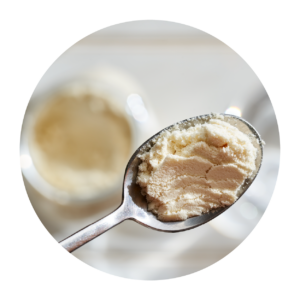WHEY PROTEIN APPLICATION USES


Whey protein hydrolysate (WPH) is a type of protein powder made from whey protein that has undergone a process called hydrolysis. Hydrolysis involves breaking down the long chains of amino acids in whey protein into shorter peptides and amino acids, which are more easily absorbed and digested by the body. The hydrolysis process breaks down the protein in a similar way as to what occurs in the body’s natural digestion process. In addition to its fast absorption, WPH is also a complete protein source, meaning it contains all of the essential amino acids that the body needs to build and repair muscle tissue.
Whey protein hydrolysate is a popular choice in infant nutrition, where it enables the production of hypoallergenic infant formulas. It is also used in medical nutrition due to the easy absorption and ability to go to high protein concentrations in medical nutrition products. Sports nutrition enthusiasts also seek out WPH as the rapid absorption can lead to faster recovery and improved performance.
The usefulness of whey protein hydrolysate (WPH) in your application will depend on the specific needs and goals of your product. Here are some of the potential benefits of using WPH as an ingredient:


Whey protein hydrolysate (WPH) can be a useful ingredient in beverages, especially those targeted towards sports and fitness enthusiasts. Here are some of the potential benefits of using WPH in beverages:
Some potential applications of WPH in beverages include protein shakes, meal replacement drinks, and recovery beverages. It is important to note that WPH can vary in quality and processing method depending on the manufacturer, so it is important to choose a reputable supplier to ensure a high-quality product.
Whey protein hydrolysate (WPH) can be a useful ingredient in protein bars and other bar applications. Here are some of the ways WPH can be beneficial in bars:
WPH can be a useful ingredient in a variety of bar applications, including protein bars, snack bars, and meal replacement bars. Its fast absorption, high quality, and reduced allergenicity make it a popular choice for bar manufacturers looking to create high-quality products with added nutritional benefits.


Whey protein hydrolysate (WPH) is a highly functional ingredient that can be used in a wide range of applications. Here are some of the functional properties of WPH:
WPH is a highly functional ingredient that can be used in a variety of food products to improve texture, stability, and nutritional value. Its ability to emulsify, foam, gel, bind water, and enhance flavor make it a popular choice for food manufacturers looking to create high-quality products with added nutritional benefits.